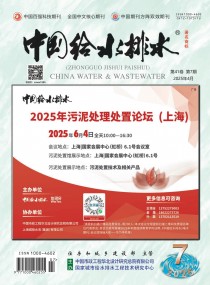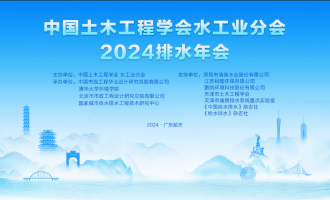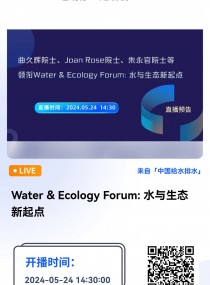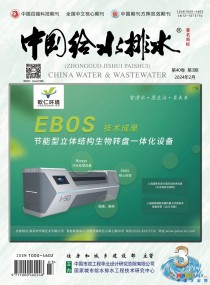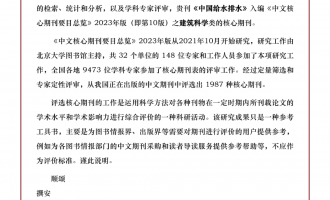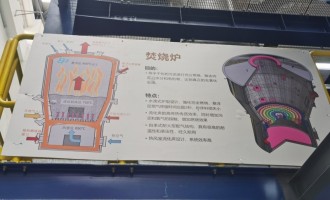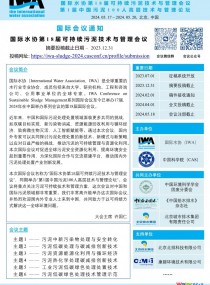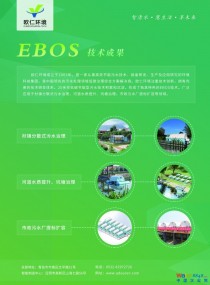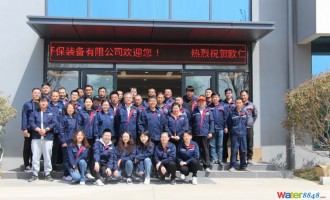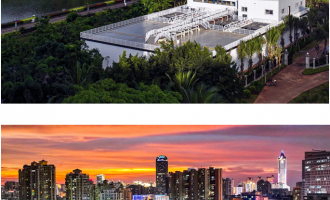收录:
摘要:
城市污泥是污水处理过程中的副产物,其含水率高,成分复杂,常规处理方法无害化难度大。超临界水氧化技术可以直接处理湿污泥,具有处理彻底、反应迅速、无二次污染等优点。本文围绕城市污泥预热过程中的亚临界水解特性及反应过程中的超临界水处理规律展开研究,主要研究内容和创新性成果如下:
污泥预热至200 °C左右首先会发生亚临界水解,本文研究了温度、初始含水率和预热时间对水解的液相产物、固相产物及液固分离效果的影响规律。研究结果表明,温度对水解的影响最大,当温度从140 °C升高至210 °C时,离心后固相含水率从75.1 %降至46.0 %,清液TOC浓度从36378 mg•L-1升高至44510 mg•L-1。170 °C时超过一半的有机物从固相进入了液相。最佳水解参数为87 %含水率污泥,温度为170 °C,预热时间为40 min,这一条件下水解后的固相产物与原污泥的燃烧性能相当。
污泥进一步预热至300 °C时会生成生物油并可能产生结焦现象,本文研究了污泥种类、反应强度(用于描述反应温度和时间)、反应压力、污泥含水率、回收油相所用有机溶剂和添加剂等因素对预热过程中产物产率的影响,并采用Mathematica软件建立了用于预测升温和恒温过程中产物产率的反应动力学模型。研究结果表明,初沉污泥的产油率最高,300 °C、60 min时高达29.7 %。反应强度0.1–100时,油相产率最高(20.1–30.9 %),这一区间容易发生结焦堵塞。生物油由污泥通过脱水反应和脱羧基反应直接转化而来,这一过程活化能仅为60 kJ•mol-1,而焦油主要通过脱水反应产生。生物油主要由脂肪烃和脂肪酸组成,中等极性。压力对产物产率的影响较小,85 %含水率污泥的产油率最高。添加K2CO3、Na2CO3、CH3COOH、MoO3-CoO/γ-Al2O3和Ru/C添加剂可以明显降低产油率,抑制结焦,其中Ru/C效果最明显。
当温度超过水的临界点(374 °C)以后,超临界水气化和氧化反应占主导,本文通过实验和Aspen Plus模拟研究了含水率、压力、温度和氧化系数对超临界水气化/氧化产物性质的影响规律,并推测其反应路径,同时对超临界水气化–超临界水氧化组合工艺进行了分析。研究结果表明,当含水率从87 %增至95 %时,气相能量回收率降低0.5 %,87 %含水率的污泥75 °C时粘度低于6500 mPa•s,作为反应原料较为合适。压力对污泥超临界水气化产物的影响不大,控制在25 MPa即可。温度从400 °C升高至600 °C时,气化率从10.4 %增至37.1 %。450 °C时,氧化系数0时H2和CH4的气相产率最高。450 °C以上时,液相中92 %以上的氮都以NH3–N形式存在,只有当温度达到600 °C,NH3–N才能有效降解。600 °C,氧化系数为4.0时,固相产物质量仅为初始污泥总质量的3.5 %,减量化效果明显。污泥在超临界水气化(450 °C)后的液相产物再进行超临界水氧化(600 °C)处理,总氧化系数1.0时,最终COD和NH3–N分别降至354 mg•L-1和47 mg•L-1,基本可达到600 °C,氧化系数4.0条件下的处理效果。
污泥超临界水处理后会生成NH3–N,酚类和吡啶类等难降解的中间产物,这类物质与活泼物质共存时,其氧化速率提高,称为共氧化现象。本文采用实验和Chemkin计算的方法进行了污泥与活泼醇类(甲醇、乙醇和异丙醇)的超临界水共氧化研究。研究结果表明,醇类的添加对污泥中TOC和NH3–N的降解具有共氧化作用。原因一是醇类可提供OH•和HO2•这两种活性自由基,原因二是醇类的添加抑制了产物中较难降解的芳香族化合物的产生,而促进了易降解的不含氮开链化合物的产生。乙醇可以在最短的时间内产生最高浓度的HO2•自由基,异丙醇其次,甲醇最慢产生浓度最低,因此共氧化效果乙醇最好,异丙醇次之,甲醇最弱。
材料腐蚀问题制约着超临界水处理技术的商业化应用,本文研究了不锈钢(316、316L)、镍基合金(Incoloy 800和825、Inconel 600和625以及Hastelloy C276)以及钛合金(TA–10)在污泥和亚/超临界水环境中的腐蚀特性。研究结果表明,临界点附近,350 °C时金属经历活化路径,表面及侧面形貌平整,400 °C时经历钝化路径,首先生成氧化物,随后氧化物发生脱落和溶解。超临界水环境下,温度高于450 °C时,化学腐蚀占主导,由于扩散速率Fe>Ni>>Cr,铁基合金生成Fe3O4外层和FeCr2O4内层的氧化膜结构,而镍基合金生成外层NiO,内层Cr2O3,最后通过固溶反应生成NiCr2O4的氧化膜结构。350 °C和400 °C时推荐316L作为选材,450 °C时推荐Incoloy 825作为选材,520 °C时推荐Inconel 625作为选材。
关键词:
英文摘要
Municipal sewage sludge is generated by wastewater treatment with high moisture contents and complicated compositions. Conventional sludge treatment methods not only require a energy-inefficient pre-drying procedure but can also generate secondary pollution. Supercritical Water Oxidation (SCWO) of sludge can efficiently realize the maximization reduction and harmless disposal with low cost by direactly treating wet sludge. This thesis studies the subcritical hydrolysis characteristics and supercritical water oxidation of municipal sewage sludge. The major innovative results are shown as follows:
Influences of temperature, initial moisture content and preheating time on liquid and solid products as well as their separation are studied with respect to subcritical hyrolysis reactions below 200 °C. The results show that temperature plays the most important role in hydrolysis. Moisture contents of solid products decrease from 75.1 % to 46.0 % and the liquid TOC contents increase from 36378 mg•L-1 to 44510 mg•L-1 with an increase in temperature from 140 °C to 210 °C. More than half organics transfer from the solid phase to the liquid phase at 170 °C. The optimum hydrolysis parameters are 87 % moisture content, 170 °C and 40 min. Under this condition, the combustion performance of solid products are comparable to original sludge.
Biocrude produces and cooking occurs with furture heating to higher than 300 °C. Influence of sludge type, reaction intensity which describes the reaction temperature and holding time, pressure, moistuere content of sludge, recovery solvent and additives on the products fraction yields are investigated. Reaction kinetic models are established using the Mathematica Software to predict the products fraction yields during the heating and isothermal processes. The results show that primary sludge produces the maximum biocrude yield as high as 29.7 % at 300 °C and 60 min. Highest biocrude yields (20.1–30.9 %) are achieved with the reaction intensity of 0.1–100, which is prone to coking and plugging. Biocrude is directly produced from sludge through dehydration and decarboxylation reactions. The activation energy of this process is only 60 kJ•mol-1. By contrast, tar is generated by the dehydration reaction. Biocrude is mainly composed of aliphatic hydrocarbons and fatty acids with medium polarity. Pressure plays a small effect on the product fraction yields. Highest biocrude yields are produced from sludge with 85 % moisture contents. Added K2CO3, Na2CO3, CH3COOH, MoO3-CoO/γ-Al2O3 and Ru/C significantly decreases the biocrude yield. Ru/C is the most effective additive to avoid cooking.
Supercritical Water Gasification (SCWG) and SCWO domains when the temperature exceeds the critical point of water (374 °C). Effects moisture contents of sludge, pressure, temperature and oxidation coefficient are explored experimentally and theoretically with the Aspen Plus Software to deduce the reaction pathway. Feasibility of a SCWG–SCWO combined process is also analyzed. The results show that under SCWG conditions, energy recovery rates of gaseous products decrease by 0.6 % as the moisture contents increase from 87 % to 95 %. The opitimum moisture content is 87 % because its viscosity is lower than 6500 mPa•s at 75 °C. Pressure has little influence on the gaseous and liquid products, therefore, a pressure just over the critical pressure (22.05 MPa), such as 25 MPa is reasonable. A temperature increase from 400 °C to 600 °C results in a gasification efficient rise from 10.4 % to 37.1 %. An oxidation coefficient of 0 produces the highest H2 and CH4 yields at 450 °C. 92 % of nitrogen in liquid products is in the form of NH3–N at a temperature higher than 450 °C. 600 °C or higher temperature is essential for a significant degradation of NH3–N. At 600 °C and with an oxidation coefficient of 4.0, the mass of solid products is only 3.5 % of the sludge initial mass. If coupling SCWG at 450 °C and SCWO at 600 °C with a total oxidation coefficient of 1.0, COD and NH3–N contents of liquid phase are 354 mg•L-1 and 47 mg•L-1, respectively, which are basically comparable to the water quality obtained at 600 °C and with an oxidation coefficient of 4.0.
Refractory species such as NH3–N, phenols and pyridines can be produced by supercritical water process. The oxidation rate of these species can be accelerated with reactive species, which is referrd to co-oxidation phenomena. Effects of reactive alcohols (methanol, ethanol and iso-propanol) on SCWO of sludge are studied experimentally and theoretically with the Chemkin Software. The results show that there are co-oxidation effects between alcohols and sludge on the degration of TOC and NH3–N. One reason is that alcohos can provide OH• and HO2• radicals. Another reason is that adding alcohols not only suppresses forming recalcitrant aromatic products but also promotes producing reactive products (non-nitrogen open chain compounds). Production speeds and amounts of HO2• radicals by alcohols are in the following order: ethanol> iso-propanol> methanol, so ethanols is the best co-oxidaiton additives, followed by iso-propanol and methanol.
Corrosion problems restrict the commercial application of supercritical water treatment technology. Corrosion behaviors of stainless steel (316 and 316L), nickel base alloy (Incoloy 800, Incoloy 825, Inconel 600, Inconel 625 and Hastelloy C276) and titanium alloy (TA–10) in subcritical and SCW environment are explored. The results show that at temperatures near the critical point of water, surface and side morphologies are smooth because alloys undergo activation pathway at 350 °C. By constrast, the alloys form oxide and follow by the spallation and dissolution of oxide because the alloys undergoes passive pathway at 400 °C. In SCW environment, chemical corrosion domains when temperature is higher than 450 °C. For the differences in the diffusivities of alloy elements (Fe>Ni>>Cr), duplex oxide layer structures of Fe-based alloys are formed with an outer Fe3O4 layer and an inner FeCr2O4 layer. For nickel based alloys, NiCr2O4 oxide is formed by solid solution reaction of a duplex-layer oxide scales (an outer NiO layer and an inner Cr2O3 layer). 316 SS is the optimum material at 350 °C and 400 °C, Incoloy 825 can be chosen at 450 °C and Inconel 625 can be used at this temperature.
英文关键词
[Biocrude, Corrosion, Oxidation, Sludge, Supercritical water]









